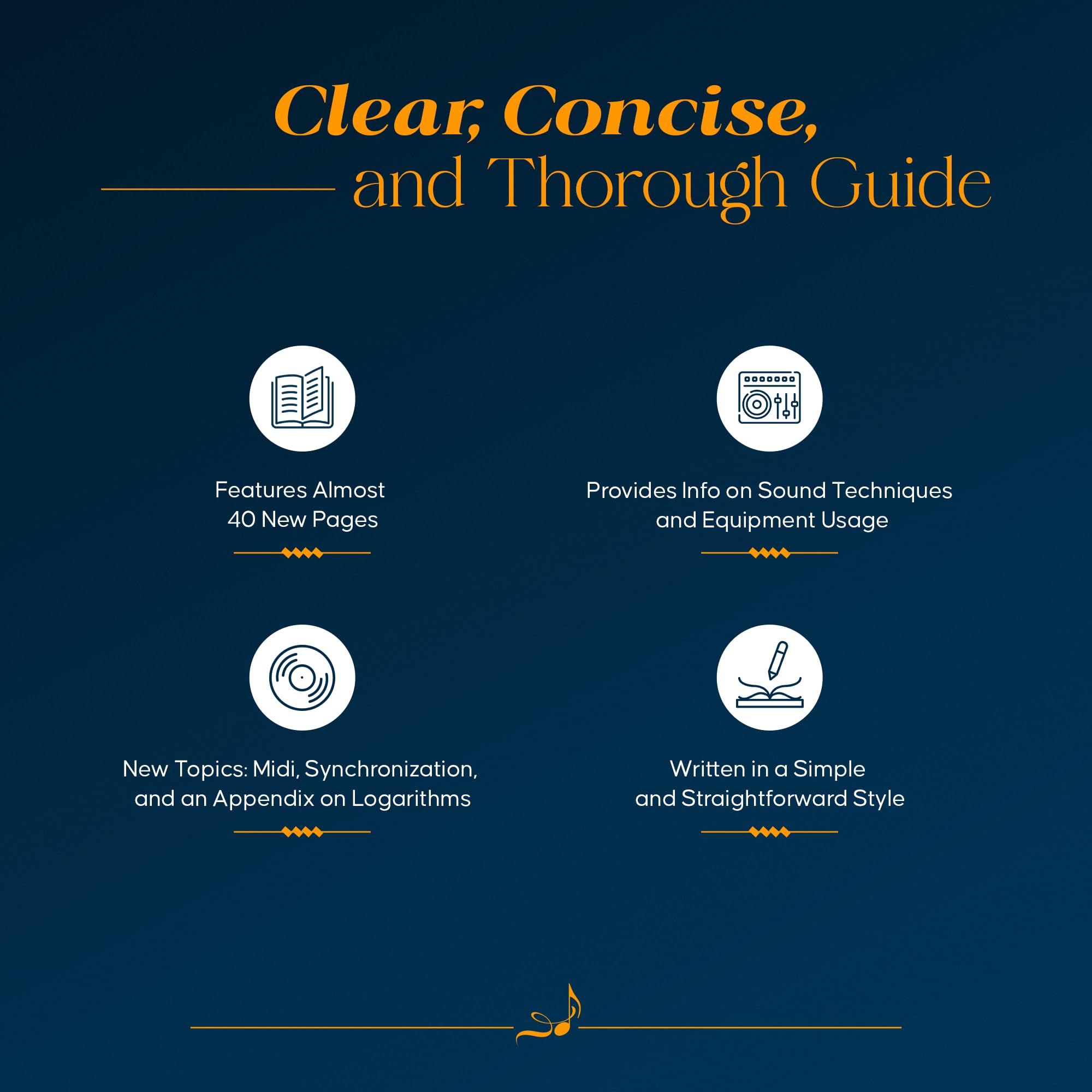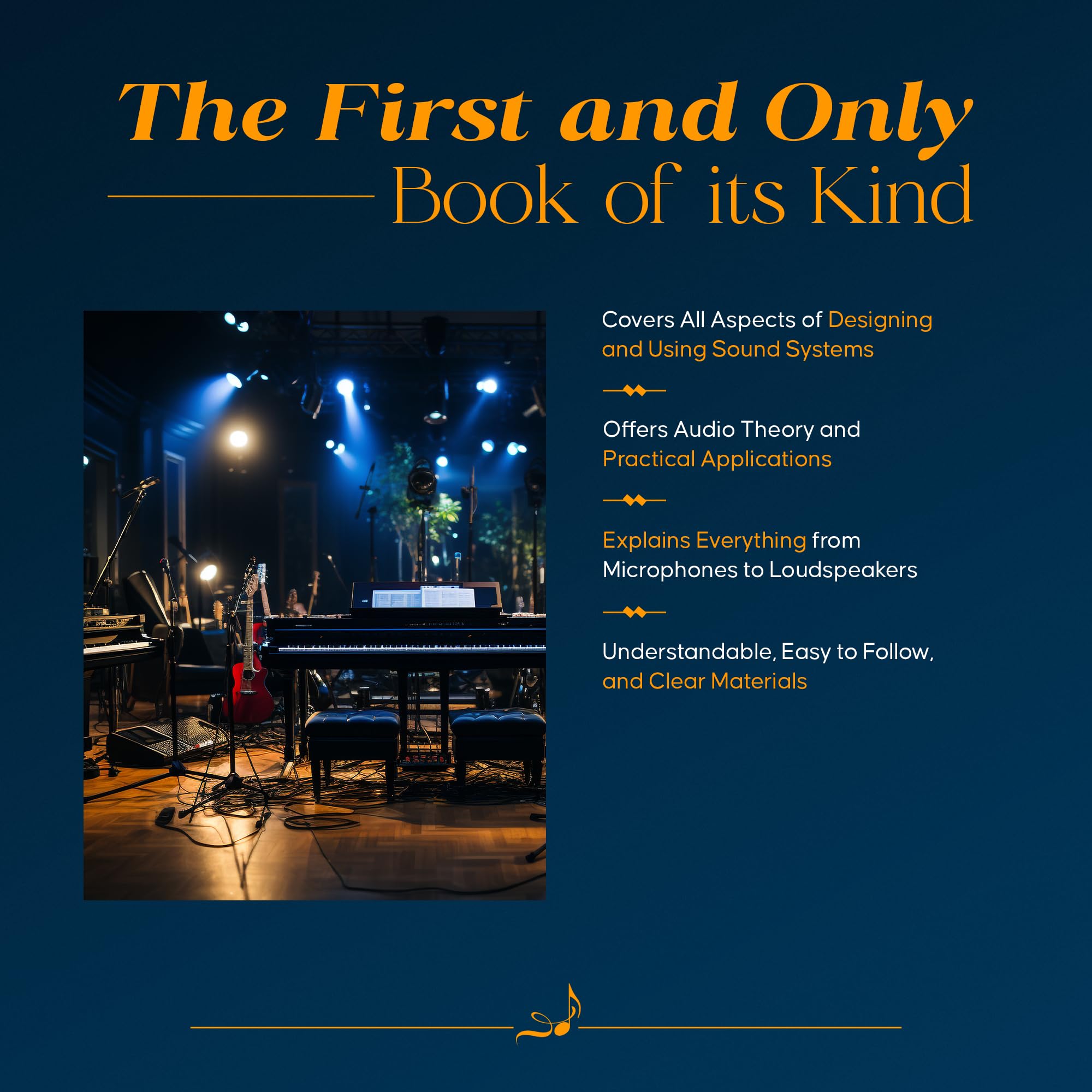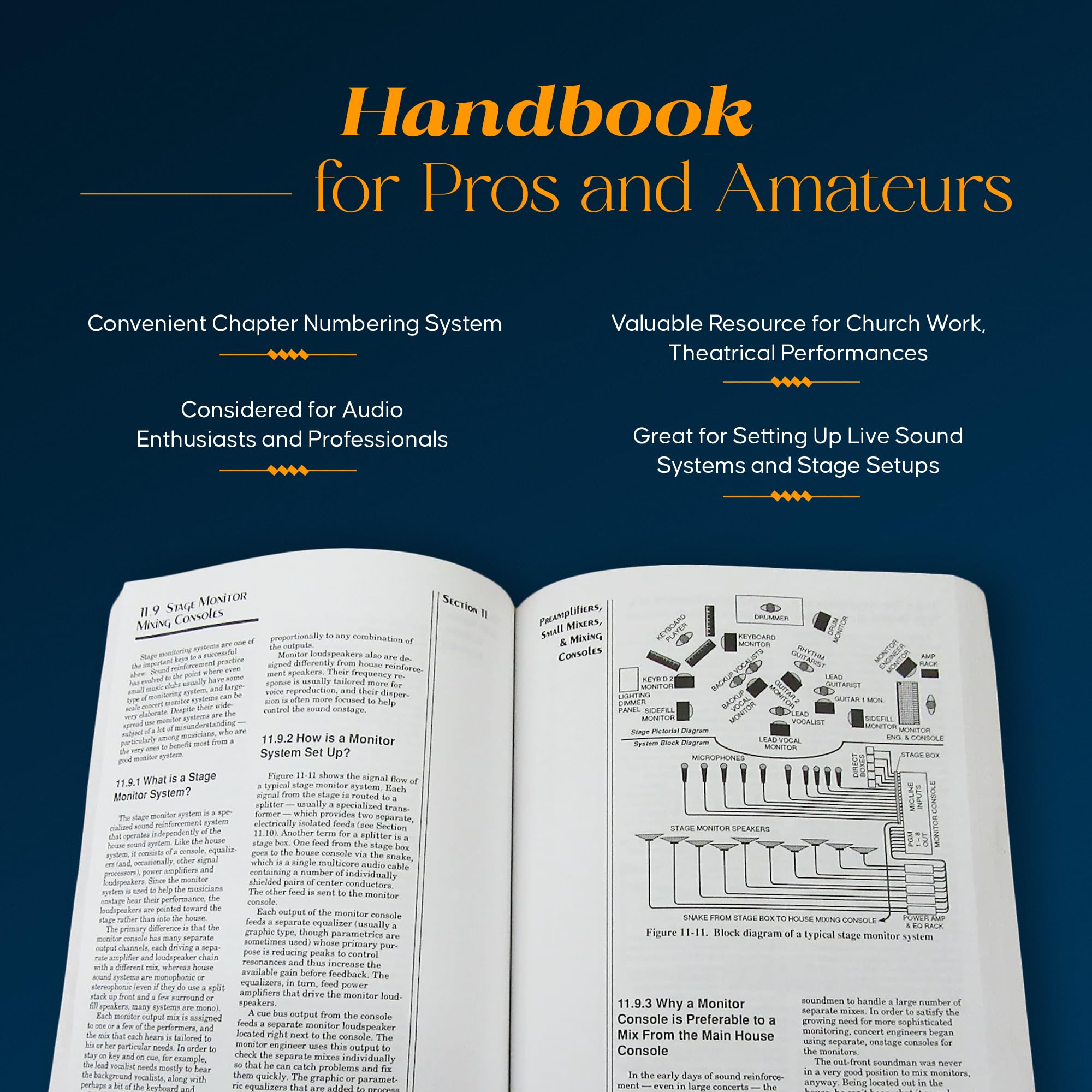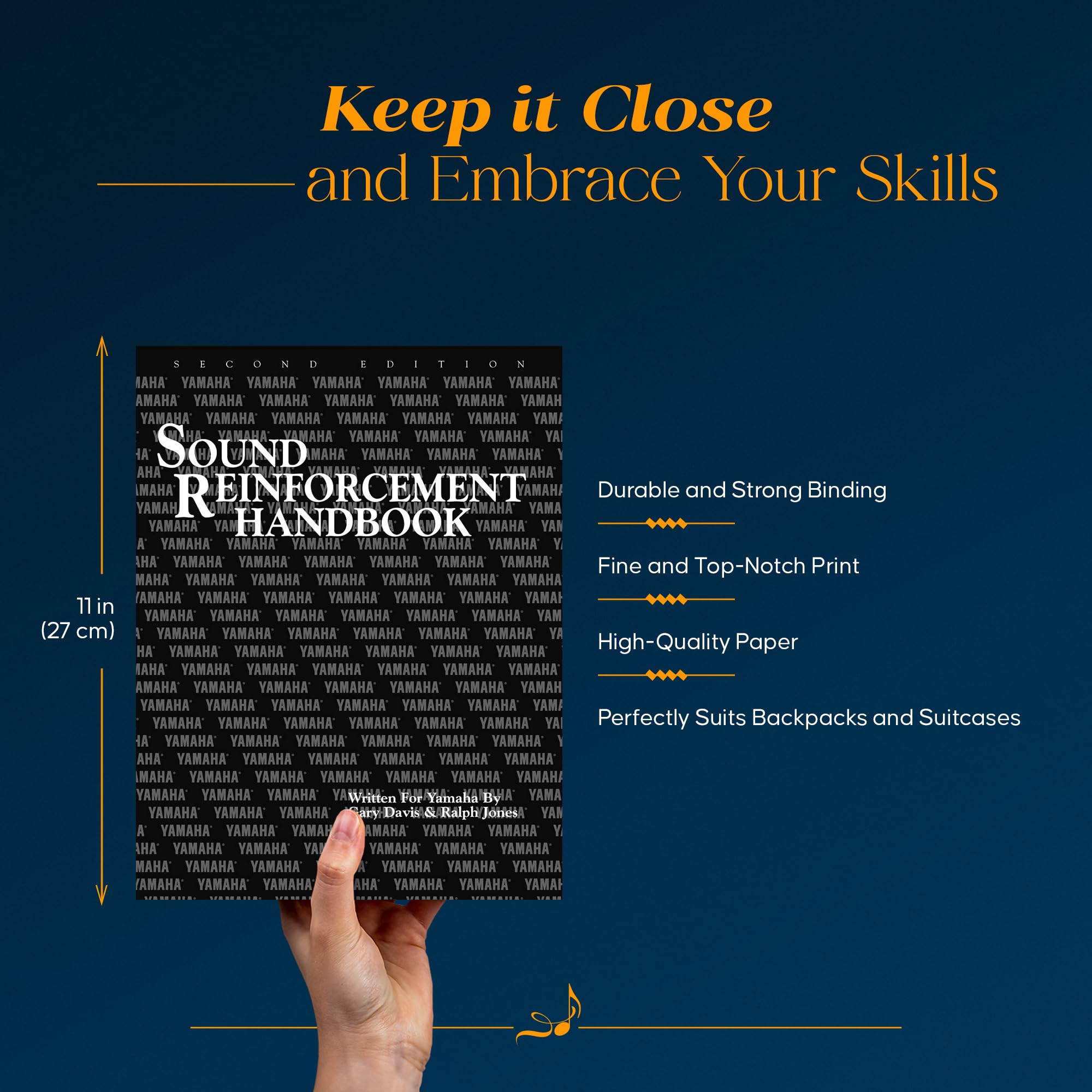










The Sound Reinforcement Handbook (Second Edition)





A**R
The go to book !
If you're reading this review, then you're in the same boat that I was in sometime ago.Don't think twice, just buy this book!!! Whatever the price may be.
S**V
best book about sound reinforcment
Best book about soundreinforcment. What is a sound syste; how to understend specs; decibel and sound levels...all in the book
C**9
Biblia del Audio.
Tremendo libro compilatorio que todo ingeniero en audio debe tener, más si estás empezando a estudiar.
R**S
Well worth the money
A great book for the beginner or even as a reference guide for the experienced hand. Lots of great information in here. I had one before and gave it away to a beginner so I bought another just to keep on the shelf.
T**O
Sorcerer
Supera con creces las expectativas. El mejor manual. Me venia recomendado y la verdad es que contiene todo lo necesario para que un sonidista principiante o profesional prospere en su camino a una mejor calidad de trabajo.
A**Y
A very practical Handbook
Because this is a thick book (over 400 pages), I initially assumed this was an academic textbook, and I worried whether the writing was practical enough. But this isn't true at all: as the title states, it is a Handbook. The preface explains that it started life as a manual to accompany Yamaha's first console (the PM-1000), and went much further than just explaining how to operate the console, instead dealing with the much wider topic of the basics of sound reinforcement. It was very popular - more popular than the console - so the authors eventually expanded the material into this book. The writing is extremely practical, with a some supporting theory. I find the writing extremely clear and unambiguous, helped by the hundreds of supporting diagrams. I see no mention of computers - this second edition is from 1989, so you'll need to look elsewhere to understand that aspect, but analog audio (mics, speakers, cables...) is of course still massively important. Finally - I really like this quote from page 313: "Combining basic principles in creative ways to solve individual problems is the essence of professional sound".
V**Y
Best primer for audio engineers
I am a musician and songwriter who needs to address performing and recording issues. So I became an amateur sound engineer. I am writing this review in 2013, almost 25 years after this book was published. The reason I got an interest in this book was a reference in the Yamaha mixer manual.That got my attention and I decided to give it a try. This book was written by Gary Davis and others, Mr. Davis was an adviser and manual writer for Yamaha USA. I have a deep respect to Yamaha instruments and music products and I thought it cannot be a bad choice as I was looking for audio engineering primer. It came true and that was the best bet I ever made for purchasing books online. What hit me that right off the bat is an excellent introduction and explanation of the headroom, the concept that was struggling for sometime and even after discussion the subject with professionals and reading multiple articles and manuals. What digital clipping is. Very practical, methodical, not too simple - a lot of technical lingo or physics concepts, but answered pretty much almost all my questions. So just to give an example, this book provided a criteria for specification for golden plated vs nickel plated connectors. I just got a call back from one of major US supplier salesperson regarding specifications of 1/4" connectors and - surprise - they don't know it. Or for instance why you don't want to use mic cable for unbalanced signal. Books has many practical advises, explains conceptual schematics, provide an advise on the cable construction, to level of details to how to build cable from balanced output to unbalanced input; or why do not use stereo cables on mono signal. Lots, tons of useful information. MIDI explanation leaves nothing behind. Clear, precise language. Some items are dated, no doubt, no new OFC cables for instance. No modern digital processing obviously. But it is astonishing the level of industry 25 years ago. Folks, pretty much all gadgets we have today were invented long, long time ago!!! Again, information provided covered all my needs for live performances and studio building; this book is a keeper for an amateur and no doubt for many professionals too. Excellent, timeless, with a lot of depth reference. Thanks and the best regards to the authors for their excellent work!
Trustpilot
1 month ago
2 months ago